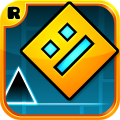Minecraft, developed by Mojang Studios, is a game that needs no introduction to gamers worldwide. Renowned for its block-like aesthetic and immense creative freedom, it serves as both a sandbox builder and a survival challenge. This article wheels through every possible facet of this beloved game—from the core gameplay mechanics to graphics,...
Minecraft
Minecraft, developed by Mojang Studios, is a game that needs no introduction to gamers worldwide. Renowned for its block-like aesthetic and immense creative freedom, it serves as both a sandbox builder and a survival challenge. This article wheels through every possible facet of this beloved game—from the core gameplay mechanics to graphics, from bug issues to strategic gameplay tips.
The Game and Its Gameplay
Minecraft presents a world where players can craft, build, and fight for survival. The game offers several modes, each with its unique challenges and gameplay style. The primary mode, Survival, sees players managing resources, maintaining health, and building shelters to protect against creatures of the night. Meanwhile, Creative mode offers unlimited resources and the ability to fly, allowing players to construct vast, complex structures. The Adventure and Hardcore modes add further variety and challenges to the game.
The beauty of Minecraft lies in its simple yet profound mechanics. Players mine various materials, from common cobblestone to rare diamonds, which can be utilized to craft tools, weapons, and buildings. The game’s physics engine encourages creativity in building structures, while its open-world nature ensures that no two players will have the same experience.
Narratives and Stories: The Subtle Plot of Minecraft
Unlike many video games, Minecraft does not follow a linear storyline. Its narrative is created by the players, with the only semblance of a plot revolving around traveling to the End dimension and defeating the Ender Dragon. This freedom allows players to create personal goals and stories, ranging from building a small home to crafting a sprawling cityscape.
The game does include achievements and advancements that guide players through various aspects of gameplay, subtly suggesting new goals. These achievements serve as a framework for the narrative that players craft for themselves, making each Minecraft gameplay experience uniquely personal.
Technical Glitches and Bugs
Despite its brilliance, Minecraft is not without its flaws. Common issues include world corruption, game crashes, and various minor bugs that affect gameplay—from disappearing items to erratic behavior of creatures. Mojang has been constantly updating the game to fix these bugs, with a community of players also providing support through mods and bug-fix packs.
One notorious bug was the Far Lands, an area at the edge of the world where game physics start breaking down, leading to terrain that defied normal Minecraft logic. Although removed in later versions, it stands as a testament to the game’s vast, unexplored boundaries and the quirky charm of early video game development glitches.
Accolades and Impact
Over the years, Minecraft has garnered numerous awards and nominations, emphasizing its impact on the gaming industry and beyond. It has been named one of the best-selling video games of all time, with a dedicated player base and a vibrant community. Awards such as the Kids’ Choice Award for Favorite Videogame and the BAFTA for Best Family and Social Game highlight its cross-generational appeal and educational value.
More than just a game, Minecraft has also been used in educational settings, demonstrating its utility as a tool for engaging young minds in learning programming, mathematics, and even history. Teachers have utilized the game to create simulations and models, providing a dynamic platform for interactive learning.
Graphics and Art Style: The Iconic Blocky Look
The graphics of Minecraft are instantly recognizable with their chunky, block-based style. This simplicity is deliberate, serving both an artistic and practical purpose. It lowers the barrier for graphics performance, allowing the game to run on various devices, from high-end gaming rigs to mobile phones. Each block is distinctly textured, which adds to the charm while making the game world easy to navigate.
This style also encourages creativity among players, as they use these blocky elements to construct elaborate structures and artworks. This has led to a culture of sharing creations in the community, from replicas of famous landmarks to original fantasy worlds.
Design and Sound Elements
The game design in Minecraft is focused around its core mechanic: building. The user interface is minimalistic, which makes for an uninterruptive and immersive experience. Inventory management is straightforward but requires strategy, especially in Survival mode where resources can become scarce.
The sound design is subtle but effective. Ambient sounds add to the immersive experience, with sounds varying from the gentle hum of the plains to the terrifying noises of the nether. The soundtrack, composed by Daniel Rosenfeld (C418), offers tranquil pieces that perfectly complement the game's sandbox nature.
Cheat Codes and Tricks
While Minecraft is generally played authentically, several in-game commands and cheat codes enhance gameplay or simplify tasks. Commands like `/give` for item spawning, `/tp` for teleportation, and `/weather` to change weather conditions are popular among players. These commands require enabling cheats, which can be done from the game’s settings menu.
